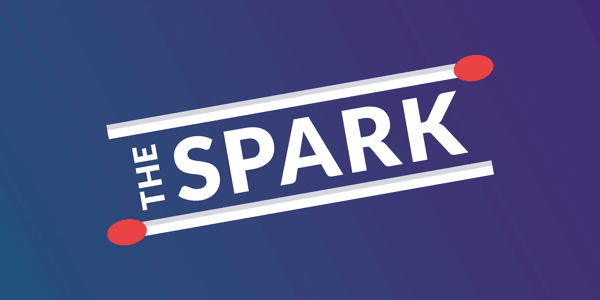Double the Data, Double the FunWhat’s your marketing secret weapon? Metrics, of course. They’re the foolproof way to analyze what content your audience is loving and how your social strategy translates into engagement and earnings. And Instagram's latest move encourages marketers to expand their metric collection timeline. Because when it’s time to crunch the numbers, there’s no such thing as too much data.
With the expansion of IG’s new Insights calendar tool from 30 to 60 days, brands now have a larger window of information to work with. Translation: You can better understand how your content is performing over time. To take full advantage you’ll want to keep a close eye on how these insights might alter your social and content marketing strategy. For instance, you might notice an IG campaign gained traction a month after the original launch, coinciding with targeted email promotions. Or maybe you start posting more frequently and see a 20% increase in accounts reached after 45 days, highlighting the importance of posting often and the value of social campaigns with email marketing.
And in even better news, Instagram hinted they’re planning to extend the data collection period to 90 days later this summer, gradually giving marketers more data to draw specific and reliable conclusions. Take advantage of the new date range and put those numbers to work!
TL;DR: IG’s Insights calendar tool now lets marketers analyze metrics from the past 60 days. Use this larger window of data to track content performance and adjust your strategies accordingly.
The Search Results Are In ...We’ve all Googled something and been completely surprised or thrown by a result. A new SERP feature from the search engine aims to demystify those results. And while Google isn’t giving away all of its secrets, it *is* offering up a few more breadcrumbs.
Google’s new “About This Result” feature provides more context about each result shown, including a brief overview of why it's in the results of your query. It also gives marketers access to actionable insights like keyword matching, related terms, link usage (speaking of - don’t forget about Google’s recent updates to its link scheme guidelines), and local relevance.
Although the update may not be significant, anything that helps strengthen SEO strategies are a welcome addition to any marketer’s toolbox. By providing additional insight into how Google ranks its response listings, marketers can note how Google assesses things like local relevance and backlinks and gather a better understanding of how to make the best use of Google.
TL;DR: Google’s new search result explainers will help marketers see how things like keyword matching, related terms, link usage, and local relevance play into who earns a spot on the coveted first page.
Clubhouse: No Invite NecessaryAre you one of the 10M+ people still waiting for a Clubhouse-invite? Well, the bouncers, we mean developers, are finally opening the proverbial doors and Clubhouse is scrapping the infamous invite-only system amid competition from industry heavyweights.
Once a feature that made Clubhouse unique, its — exclusivity — has allowed Twitter and Facebook to build Clubhouse-esque products without a waitlist. In addition to ditching the invite requirement, the Clubhouse app is now available to Android users and introduced DMs.
While Clubhouse made a splash during the pandemic, numbers have been waning in the face of competitors and a less locked-down world. These new updates could get the party going again. But with other social platforms vying for that audio audience there’s still a lot of competition for Clubhouse to overcome. As brands consider an audio strategy, they should take stock of all the social media options, including established platforms like Twitter and Facebook.
Tl;DR: Clubhouse ditches its invite requirement and adds additional features to increase users as it faces stiff competition from Twitter and Facebook. Brands should survey the field before entering the social audio fray.
What Lit Us Up
Ridin’ ElectricBuckle up, the Tennessee Valley Authority, a federally-owned utility organization, launched a campaign that shows consumers what life is like with an electric ride. Raven Hernandez, the founder of the electric rideshare company Earth Rides, hosts the TVA’s (not that TVA, “Loki” fans) five-part web series, which was created to influence public opinion on electric vehicles (EVs) and encourage consumers to make the switch.
In the first episode, Raven joins a local celebrity to test the limits of the new Nissan Leaf. The story took on entertaining twists, like a trunk space challenge, which gave the contestant one minute to fit their luggage in the back of the Leaf (and showed viewers the spaciousness of EVs). And to educate consumers how the Nissan Leaf (and all EVs) differ from gas-powered vehicles, the episode also includes an informative interview with Aditya Jairaj, Nissan’s Director of EV Marketing. The TVA boosted the campaign’s reach and engagement with Twitter, Instagram, and Facebook promotions. The brand tagged relevant locations (like coffee shops and music stores) visited by the hosts in the episode with each post, a great way to synergize the real and virtual world impact. The TVA’s digital presence made it easy for its audience to discover the campaign and embrace its message wherever they are.
Between the creative web campaign and timely social posts, the TVA is trailblazing the marketing scene for utility brands with omnichannel strategies that connect on and off-line. And their originality is putting them on the map with consumers interested in learning more about electric vehicles.
TL;DR: The Tennessee Valley Authority’s latest electric car campaign embraces digital and social distribution while bridging virtual and real world connections. They’ve used omnichannel strategies to educate consumers and solidify their brand’s voice in the electric transportation conversation. (Was this email forwarded to you? Sign up here.)
|
-1.png?upscale=true&width=346&upscale=true&name=Tier%20One%20logo_color%20(1)-1.png)


